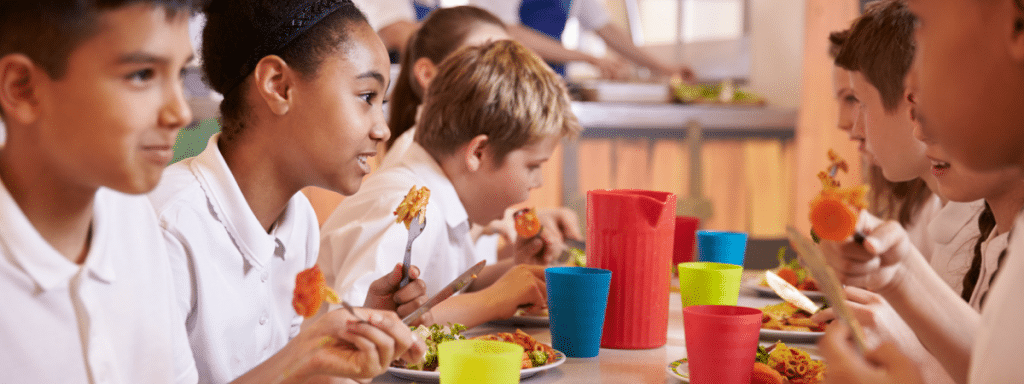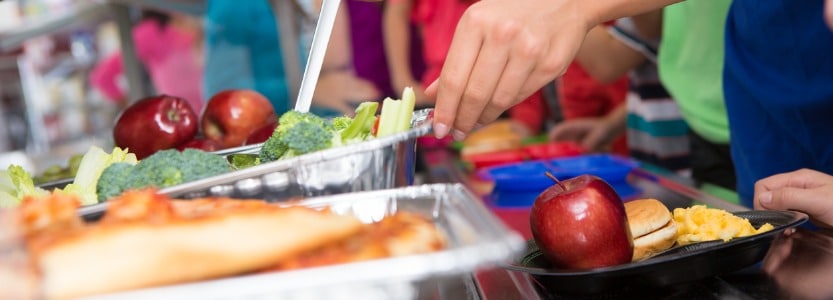BLOGS
Reduce Queues and Increase School Dinner Uptake

Studying makes students hungry. According to a research published in the Psychosomatic Medicine (Journal of Biobehavioral Medicine) in September 2008, mental activities make people hungry. During the study, students completed one of three tasks – sitting & relaxing, reading & summarising a text, and completing a memory & attention tests.
After 45 minutes of doing their task, they were treated to an all-you-can-eat buffet lunch. Although the subjects burnt around the same amount of calories, students who completed strenuous mental tasks, particularly those who completed a memory & attention test, consumed over 250 calories more than those who were relaxing.
Blood samples taken before, during and after the activities found that thinking hard causes notable changes in the body’s glucose and insulin levels, triggering the hunger feeling.
The result of the research underlines the importance of school dinners. It makes sure that children eat a healthy and balanced meal when they are at their hungriest, and not food high in calories but low on nutrients.
School dinners provide the energy to keep going
Further studies carried out in the UK also revealed that school dinners not only provide good nutrition, but also have a positive impact on schools. School dinners not only keep children going for the rest of the day, it also improves behaviour and drives up classroom standards.
This was evidenced by the result of the ‘free school meals pilot scheme’ conducted in 2009. At the end of the scheme, children who were getting free school meals were two months ahead of their peers.
Yet, despite studies proving the positive impact of school dinners, schools still struggle to convince parents and children to choose school meals over packed lunches. In fact, even those who are entitled to free school meals would rather go hungry than take up their free meals.
Reasons for students rejecting school dinners
Stigma associated with free school meals is the most serious reason for students shunning free school meals. However, it’s only one of them, and schools are already addressing this issue by introducing cashless catering.
There’s another major reason for students opting out of school dinner. And it’s not as simple to address. It’s the fact school meals are not fun. Mealtime is about food, socialising and sharing. When it happens at a table with friends, it’s a pleasant activity. It’s something to look forward. It creates happy memories and positive associations. However, that’s not what happens at school mealtimes.
For many schools, mealtime is regimented. Pupils, particularly at primary schools, feel they are forced to eat everything. They have to eat in silence while being watched by bossy dinner ladies who don’t listen, and keep tabs on misbehaviour. Their friends eating a packed lunch on the other hand, are free outside playing and having fun.
In secondary schools, students complain of long queues and no time to eat their food before they hurry back to the classroom. If they attend a lunch club, they will be lucky if they get to eat at all, as they only have 15 minutes to spare for eating. Many end up buying a sandwich at break time to eat on the go during their lunch break. Not exactly a conducive environment for healthy eating.
Putting the fun back in to school dinners
There is no easy answer for making school dinners fun. What makes dinner fun at home will not work at school canteens with hundreds of hungry children. And making a game of school time is not an option. However, providing a more relaxed environment is.
A relaxing lunchtime, with time to chat with friends will go a long way to making school meals fun. Henry Dimbleby, co-author of school food plan, recommended getting rid of prison-style trays with separate compartments. However, for many students, having enough time to eat their food is more welcome.
To shorten queues, the school food trust suggests that schools should stagger their lunch times. This could mean letting younger children have their school dinner half an hour earlier than older children. Keeping to one-hour lunchtimes, younger children also go back to the classroom an hour earlier.
This can reduce crowding and queuing dramatically. Not only will it make the canteen less busy, it will also make playgrounds less crowded.
Pre-ordering and food collection points reduce queues
Another option to reduce queues is to provide multiple points where students can collect their food. Of course, this may mean increasing catering staff, but staff increase can be kept to a minimum with the introduction of cashless catering. Students can pay and order in advance and food can be prepared and ready for them to collect at pick-up points.
As well as shortening queues, it is also important to make queuing less stressful. The fear of losing out on the best food and being late for the next class increases students’ stress and their desire to jump the queue, or to opt out of school dinners altogether.
Providing a cashless catering system that can accommodate school meal pre-ordering will ensure the catering staff order and cook the right amount of food, and provide assurance to the students that they will get what they have ordered.
Waiting a long time to get their meals and having little time to eat them isn’t necessarily fun. Reduce the queues, increase the time for eating and playing, and suddenly lunchtime becomes more relaxing with students able to focus for longer.
Related links & news stories:
DfE: Free School Meals Pilot Evaluation
Daily Mail: Ban packed lunches so children eat healthy school dinners












